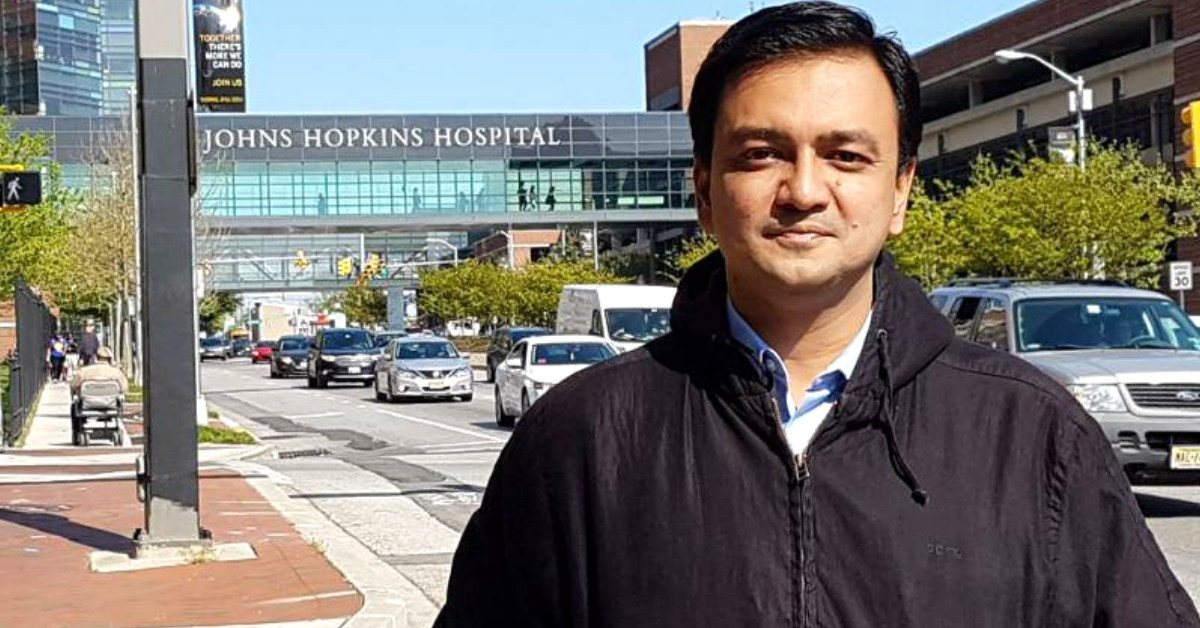Pune Man Suffers Mid-Air Cardiac Arrest On Flight, Hero Doctor Saves His Life !
When Ashok Jadhav was boarding a flight with his family from Nagpur to Pune on Monday night, little did he know that his life would soon be hanging by a thread.

Medical complications on flights happen more often than we think they do, and this is precisely the reason that domestic and international aircraft are well-equipped with medical emergency kits.
However, it is important to note that even though the cabin crew is trained to administer basic first aid when the need arises, the presence of a doctor or even a medical representative on the flight is nothing short of a blessing.
On Monday, 17 December, when Ashok Jadhav was boarding a flight with his family from Nagpur to Pune, little did he know that his life would soon be hanging by a thread. Fortunately for Jadhav, his saviour was boarding the same flight as him.
Dr Uday Rajput, an MD in Paediatrics and the Director of the Cardiopulmonary Resuscitation (CPR) centre at the BJ Medical College in Pune, was among the 120 passengers on board the aircraft.

Twenty minutes into the flight, he heard a woman calling out to the airline staff about a medical emergency. The staff immediately reached out to the pilot who then used the PA system to ask if there was a doctor on board.
Rajput then rushed to Jadhav. “He had lost consciousness, and there was no breathing nor a pulse, a clear indication of a cardiac arrest. I decided to give him the CPR. He was travelling with his wife and a couple. We took him to the open space near the rear lavatory of the aircraft. I started the CPR and kept at it for two minutes,” he told The Times of India.
However, when Jadhav didn’t regain consciousness, Rajput realised that mere CPR wouldn’t suffice and requested the airline staff for an automated external defibrillator.
Thanks to the mandatory requirement for all airlines to be geared with this equipment, no time was wasted, and Rajput immediately attached the leads to Jadhav’s chest to give him a shock that would make his heart beat again.
You may also like: Be Prepared: 10 Common Medical Emergencies & How to Deal With Them
Following this, Rajput continued to administer CPR for another five minutes. After performing all these procedures, Jadhav finally started breathing again, his pulse returned to normal and he slowly opened his eyes. He was kept on the in-flight oxygen cylinder and the plane was routed back to Pune for an emergency landing. He was later taken to the airport hospital.
“I did not take the patient’s or his relatives’ contact numbers. In the little interaction [we had], I learned that they were going to travel from Pune to Kolhapur. They thanked me, and on Thursday I got a call from the GoAir office in Mumbai. We have trained many professionals including doctors and nurses to perform CPR at our centre since it started on December 9. We can teach others for free. Every person should know to perform the CPR. It can save lives,” Rajput added.
(Edited by Gayatri Mishra)
Like this story? Or have something to share?
Write to us: [email protected]
Connect with us on Facebook and Twitter.
If you found our stories insightful, informative, or even just enjoyable, we invite you to consider making a voluntary payment to support the work we do at The Better India. Your contribution helps us continue producing quality content that educates, inspires, and drives positive change.
Choose one of the payment options below for your contribution-
By paying for the stories you value, you directly contribute to sustaining our efforts focused on making a difference in the world. Together, let’s ensure that impactful stories continue to be told and shared, enriching lives and communities alike.
Thank you for your support. Here are some frequently asked questions you might find helpful to know why you are contributing?


This story made me
-
97
-
121
-
89
-
167













